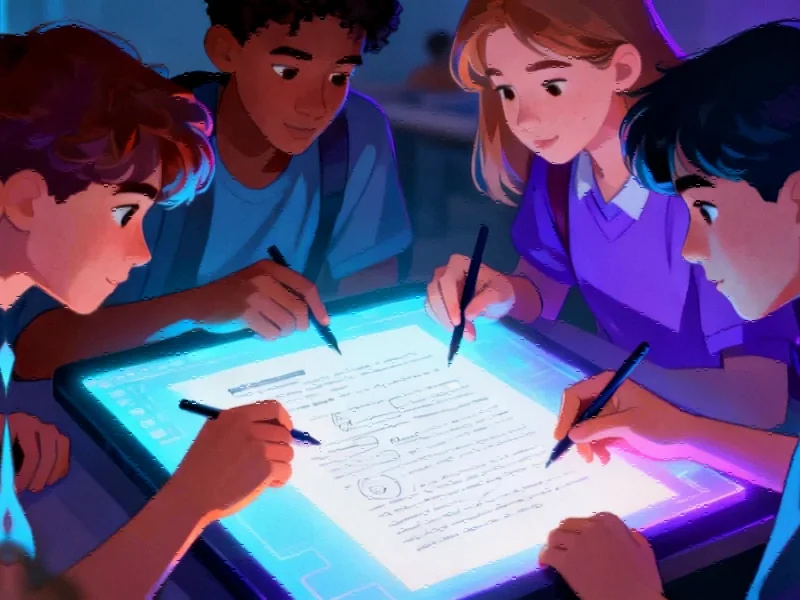The New Education Funding Paradox
Across America, school districts are implementing historic teacher pay raises while simultaneously grappling with unprecedented budget constraints. This educational funding paradox represents both a triumph for teacher advocacy and a potential fiscal time bomb for public education systems. Districts from Philadelphia to Chicago are finding creative – and sometimes controversial – ways to fund these salary increases, raising fundamental questions about sustainable education financing.
The Philadelphia Precedent: Borrowing Against the Future
Philadelphia’s recent teacher contract exemplifies this trend. After ratifying a three-year deal featuring 3% annual raises, $1,400 bonuses, and enhanced parental leave, the district made a startling financial decision: borrowing $1.55 billion to cover operations and contract costs while awaiting state payments. This move will cost approximately $29.3 million in interest alone, prompting district officials to acknowledge that every dollar spent on borrowing is a dollar not spent in classrooms.
The district’s chief financial officer explained the dilemma: “Over 53% of our funding comes from the state budget. With the legislature stalled, we had little choice but to take on short-term debt.” This scenario reflects broader industry developments in public sector financing where institutions are exploring unconventional funding mechanisms to meet immediate needs.
National Pattern: Raises Amid Revenue Uncertainty
Philadelphia’s situation is far from unique. School systems from Fairfax County to Baltimore County and Chicago have approved similar compensation packages despite uncertain revenue streams. What distinguishes these agreements is their timing – districts are committing to long-term financial obligations even as their funding foundations remain unstable.
In Fairfax County, officials adopted a tight FY2026 budget that nonetheless includes 6% pay increases for many employees. Superintendent Michelle Reid acknowledged the challenge: “These are difficult choices,” she stated, framing the budget as an exercise in balancing raises with programmatic trade-offs. The county’s approach to managing these market trends demonstrates how educational institutions are reallocating existing resources rather than securing new funding streams.
The Chicago Model: Ambitious Investment Amid Deficits
Chicago’s 2025 contract represents perhaps the most ambitious approach. The agreement promises thousands of additional staff members, class-size limits, restored libraries, and multi-year raises – all while the district wrestles with a budget shortfall measured in the hundreds of millions. District leadership framed their agreement as both moral imperative and practical strategy: invest in educators to strengthen the entire system.
“We stayed true to our values,” the district CEO declared after the agreement, even as finance officers warned that implementation would require difficult choices. This approach to historic teacher pay increases reflects a growing recognition that competitive compensation is essential for educational quality, regardless of fiscal challenges.
The Human Dimension: Beyond the Balance Sheets
Behind these financial decisions lies a fundamental human reality: teaching remains a profession where dedication often outpaces compensation. As one veteran Philadelphia teacher noted, “The profession is resilient, but that resilience is not a substitute for fair, predictable pay.” Teachers routinely spend hundreds of dollars annually on classroom supplies, and many work second jobs to make ends meet.
These new contracts acknowledge, in concrete terms, that teaching represents skilled labor deserving of professional compensation. The raises enable practical improvements in educators’ lives – the ability to choose between groceries and classroom supplies without sacrifice, the financial stability to focus on teaching rather than side jobs. These related innovations in compensation recognize that teacher well-being directly impacts educational outcomes.
The Bipartisan Shift in Education Politics
Perhaps the most surprising aspect of this trend is its bipartisan nature. Leaders across the political spectrum have supported these raises, and union victories have frequently been matched by pragmatic financial planning from superintendents and school boards. This political alignment suggests a fundamental shift in the education funding conversation.
The debate is evolving from whether teachers deserve better compensation to how communities can responsibly fund these commitments. This recent technology in educational politics represents meaningful progress, even if the implementation remains imperfect. The bipartisan cooperation, however slow and awkward, indicates growing consensus about the value of investing in education professionals.
The Sustainability Question
The critical unresolved question concerns long-term sustainability. When districts borrow to fund operations or promise raises without secured revenue streams, they create future obligations that may constrain educational spending for years to come. The tension between immediate needs and fiscal responsibility defines the current landscape.
As districts navigate these challenges, they’re exploring various approaches – from renegotiating contracts to implementing strategic cuts in other areas. The common thread is recognition that the alternative – allowing teacher compensation to stagnate while educational demands increase – represents a slow erosion of the school systems communities depend on.
Broader Implications for Public Sector Financing
This education funding challenge reflects wider trends in public finance. Just as manufacturing sectors face their own fiscal realities with federal manufacturing grants slashed, educational institutions must innovate within constrained budgets. The parallel extends to other sectors implementing healthcare tools to improve efficiency while managing costs.
Similarly, just as international partnerships like the US-Australia pact represent strategic investments in security, these teacher compensation agreements represent strategic investments in human capital. And much like scientific discoveries such as the lunar meteorite discovery reveal hidden resources, these compensation initiatives uncover previously untapped commitment to public education.
Conclusion: Progress With Uncertain Foundations
The current wave of teacher pay increases represents genuine progress in valuing educational professionals. However, the funding mechanisms raise important questions about fiscal sustainability. Districts are proving willing to make difficult financial decisions to support teachers, but the long-term consequences remain uncertain.
What’s clear is that the conversation has shifted fundamentally. The question is no longer whether teachers deserve better compensation, but how society will responsibly provide it. This represents both a challenge and an opportunity – to build education funding models that recognize teacher value while ensuring fiscal stability for the schools that form the foundation of our communities.
This article aggregates information from publicly available sources. All trademarks and copyrights belong to their respective owners.
Note: Featured image is for illustrative purposes only and does not represent any specific product, service, or entity mentioned in this article.



